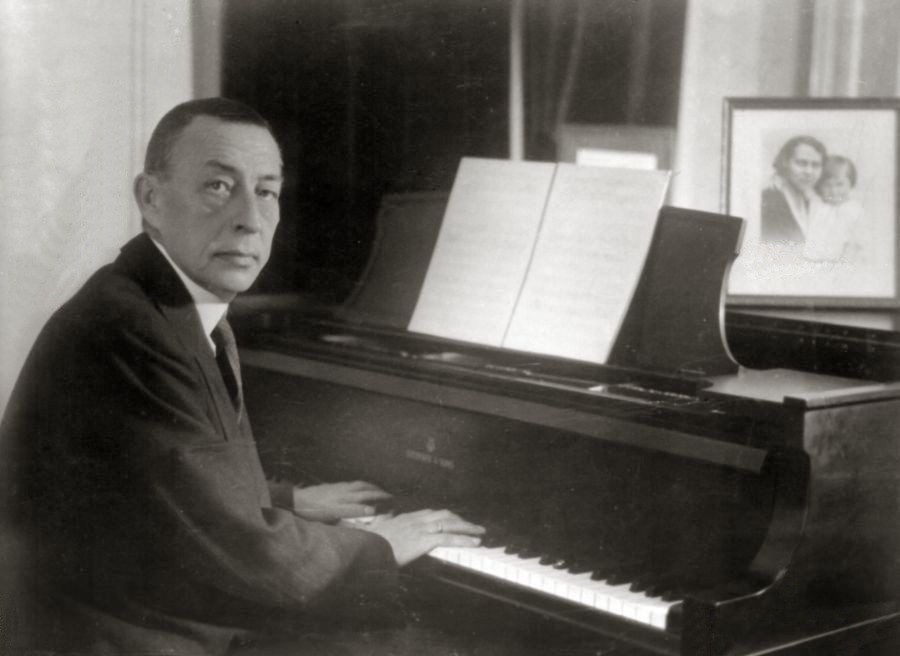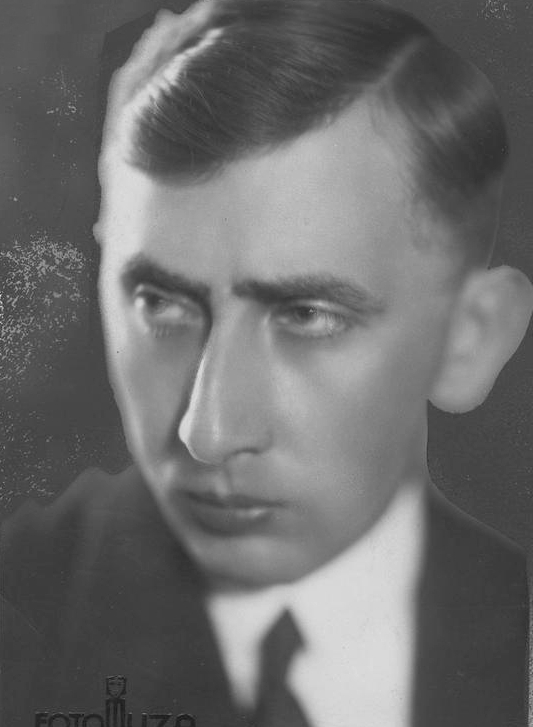|
Miłosz Magin
Miłosz Magin (6 July 19294 March 1999) was a Polish composer and pianist. Biography Born in Łódź, Poland, Miłosz Magin showed considerable musical abilities from early childhood. He was a student of piano with Margerita Trombini-Kazuro and composition with both Kazimierz Sikorski Kazimierz Sikorski (June 28, 1895 – July 23, 1986) was a Polish composer. His arrangement of the "" is currently used as the Polish national anthem. Biography Sikorski was born in Zurich, but studied in Warsaw, first music at the Warsaw Cons ... and Jan Maklakiewicz; the latter he considered his spiritual father. Magin also studied violin, cello and ballet. In 1957, he completed his piano, compositional and conducting studies, graduating from the Warsaw Higher School of Music with distinction. Miłosz Magin won prizes in several top international competitions: the V International Chopin Piano Competition in Warsaw (honorable mention), the Marguerite Long-Jacques Thibaud Competition in ... [...More Info...] [...Related Items...] OR: [Wikipedia] [Google] [Baidu] |
Polish Composers
This is a list of notable and representative Poland, Polish composers. Note: This list should contain notable composers, best with an existing article on Wikipedia. If a notable Polish composer is Talk:List of Polish composers#Article Requests, missing and without an article, please add the name Talk:List of Polish composers#Article Requests, here. Middle Ages * Wincenty z Kielczy (before 1200) * Mikołaj z Radomia (15th century) * Piotr z Grudziądza (c. 1400c. 1480) Renaissance * Sebastian z Felsztyna (c. 1480/1490after 1543) * Nicolaus Cracoviensis (1st half of the 16th century) * Wacław z Szamotuł (c. 15261560) * Mikołaj Gomółka (1535–1591) * Marcin Leopolita (c. 1540c.1589) * Cyprian Bazylik (c.1535c. 1600) * Jan z Lublina (late 15th century1540) * Jakub Polak (musician), Jakub Polak (1540–1605) * Sebastian Klonowic (c. 15451602) * Krzysztof Klabon (c. 1550after 1616) * Wojciech Długoraj (1557–1619) * Diomedes Cato (c. 1570c. 1603) Baroque ... [...More Info...] [...Related Items...] OR: [Wikipedia] [Google] [Baidu] |
Pianist
A pianist ( , ) is a musician who plays the piano. A pianist's repertoire may include music from a diverse variety of styles, such as traditional classical music, jazz piano, jazz, blues piano, blues, and popular music, including rock music, rock and roll. Most pianists can, to an extent, easily play other musical keyboard, keyboard instruments such as the synthesizer, harpsichord, celesta, and the organ (music), organ. Pianists past and present Contemporary classical music, classical pianists focus on dedicating their careers to performing, recording, teaching, researching, and continually adding new compositions to their repertoire. In contrast to their 19th-century counterparts, they typically do not engage in the composition or transcription of music. While some classical pianists may specialize in accompaniment and chamber music, a smaller number opt for full-time solo careers. Classical Wolfgang Amadeus Mozart, Mozart could be considered the first concert pianist, as ... [...More Info...] [...Related Items...] OR: [Wikipedia] [Google] [Baidu] |
Łódź
Łódź is a city in central Poland and a former industrial centre. It is the capital of Łódź Voivodeship, and is located south-west of Warsaw. Łódź has a population of 655,279, making it the country's List of cities and towns in Poland, fourth largest city. Łódź first appears in records in the 14th century. It was granted city rights, town rights in 1423 by the Polish King Władysław II Jagiełło and it remained a private town of the Kuyavian bishops and clergy until the late 18th century. In the Second Partition of Poland in 1793, Łódź was annexed to Kingdom of Prussia, Prussia before becoming part of the Napoleonic Duchy of Warsaw; the city joined Congress Poland, a Russian Empire, Russian client state, at the 1815 Congress of Vienna. The Second Industrial Revolution (from 1850) brought rapid growth in textile manufacturing and in population owing to the inflow of migrants, a sizable part of which were Jews and Germans. Ever since the industrialization of the ... [...More Info...] [...Related Items...] OR: [Wikipedia] [Google] [Baidu] |
Kazimierz Sikorski
Kazimierz Sikorski (June 28, 1895 – July 23, 1986) was a Polish composer. His arrangement of the "" is currently used as the Polish national anthem. Biography Sikorski was born in Zurich, but studied in Warsaw, first music at the Warsaw Conservatory and then philosophy at the University of Warsaw. He then studied in Lwów, which was Polish at the time, where he was a student of Adolf Chybiński, and Paris under Nadia Boulanger. In 1926, he became a teacher of composition at the Conservatory of Poznań. From 1927 to 1945, he taught at the Warsaw Conservatory. He was rector of the State Higher School of Music in Łódź. From 1951 to 1966, he taught music theory and Musical composition, composition at the Fryderyk Chopin Music Academy, Music Academy Warsaw. During this time, he was president of the Polish Composers' Union. He received many awards and honours, including: the National Music Award (1935), the Order of Polonia Restituta (1937), State Award first and second degree ... [...More Info...] [...Related Items...] OR: [Wikipedia] [Google] [Baidu] |
Jan Maklakiewicz
Jan Adam Maklakiewicz (24 November 1899, Chojnata, Congress Poland – 8 February 1954, Warsaw) was a Polish composer, conductor, critic, and music educator. His most known compositions belong to the choral music. Selected filmography * ''Pan Twardowski Pan Twardowski (Polish: ''Pan Twardowski'' ), also known as Master Twardowski (Polish: ''Mistrz Twardowski''), is a sorcerer in Polish folklore and literature who made a deal with the Devil. Twardowski sold his soul in exchange for special powers ...'' (1936) ReferencesBiography from the Polish Music Center, University of Southern California External links * 1899 births 1954 deaths[...More Info...] [...Related Items...] OR: [Wikipedia] [Google] [Baidu] |
V International Chopin Piano Competition
The V International Chopin Piano Competition () was held from 21 February to 20 March 1955 in Warsaw. The competition was won by Adam Harasiewicz of Poland. The competition was held in the rebuilt National Philharmonic, the date having been moved from October 1954 to February 1955, temporarily increasing the gap between two competitions to six years. Competitors were accommodated in the Hotel Polonia, where 70 practice pianos were installed. Awards The competition consisted of three elimination stages, with 74, 41 and 21 pianists respectively. Vladimir Ashkenazy was considered the favorite up until the final stage, where he performed less strongly, ultimately coming in second after Adam Harasiewicz. The following prizes were awarded: One special prize was awarded: Jury The jury consisted of: * Guido Agosti * Stefan Askenase * Arturo Benedetti Michelangeli * * Harold Craxton (vice-chairman) * Zbigniew Drzewiecki (chairman) * Jacques Février * Flora Gue ... [...More Info...] [...Related Items...] OR: [Wikipedia] [Google] [Baidu] |
Long-Thibaud-Crespin Competition
The Long–Thibaud–Crespin Competition is an international classical music competition for pianists, violinists and singers that has been held in France since 1943. (A Jacques Thibaud Competition was held the year before in Bordeaux: Jacques Thibaud chaired the jury and the First Prize was awarded to Jacques Dejean.) It was created by the pianist Marguerite Long and the violinist Jacques Thibaud. Thibaud died in 1953, Long in 1966. Until 2011 it included only pianists and violinists and was known as the Marguerite Long–Jacques Thibaud Competition. That year, in honour of the French soprano Régine Crespin (1927–2007), it was expanded to include singers, and renamed. Frequency The competition was initially triennial, but from 1949 it was held biennially. In 1980, it was split into two contests, where pianists compete only against other pianists, and violinists only against other violinists. Previously, violinists and pianists had competed against each other. That ... [...More Info...] [...Related Items...] OR: [Wikipedia] [Google] [Baidu] |
Jean-Marc Luisada
Jean-Marc Luisada (born 3 June 1958) is a French pianist born in Bizerte, Tunisia. He started on the piano at six years old, "the normal age". Biography At the age of 16 he began studies at the Conservatoire de Paris under Dominique Merlet and Marcel Ciampi (piano) and Geneviève Joy-Dutilleux (chamber music). He has also studied with Nikita Magaloff and Paul Badura-Skoda. In 1985, he won fifth prize at the XI International Chopin Piano Competition in Warsaw. At 29 he had performed in Europe, the United States, and Asia and was known as a performer of "outstanding brilliance". Luisada signed an exclusive agreement with RCA Red Seal in 1998. Among his recordings are the waltzes and mazurka The Mazurka ( Polish: ''mazurek'') is a Polish musical form based on stylised folk dances in triple meter, usually at a lively tempo, with character defined mostly by the prominent mazur's "strong accents unsystematically placed on the seco ...s of Chopin and the infrequently-heard ... [...More Info...] [...Related Items...] OR: [Wikipedia] [Google] [Baidu] |
1929 Births
This year marked the end of a period known in American history as the Roaring Twenties after the Wall Street Crash of 1929 ushered in a worldwide Great Depression. In the Americas, an agreement was brokered to end the Cristero War, a Catholic Counter-revolutionary, counter-revolution in Mexico. The Judicial Committee of the Privy Council, a British high court, ruled that Canadian women are persons in the ''Edwards v. Canada (Attorney General)'' case. The 1st Academy Awards for film were held in Los Angeles, while the Museum of Modern Art opened in New York City. The Peruvian Air Force was created. In Asia, the Republic of China (1912–1949), Republic of China and the Soviet Union engaged in a Sino-Soviet conflict (1929), minor conflict after the Chinese seized full control of the Manchurian Chinese Eastern Railway, which ended with a resumption of joint administration. In the Soviet Union, General Secretary of the Communist Party of the Soviet Union, General Secretary Joseph S ... [...More Info...] [...Related Items...] OR: [Wikipedia] [Google] [Baidu] |




